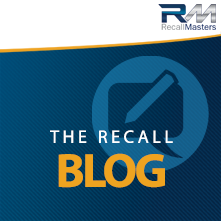Are We Playing Whack-A-Mole with Recalls?
Are We Playing Whack-A-Mole with Recalls?
Most of us in the automotive community are painfully aware that our nation is in the middle of a recall epidemic — and will be for decades to come. A low percentage of recall repair compliance pushes the numbers of vehicles on the road with open recalls ever higher, with no relief in sight.
The reality is that recalls are like the black plague for vehicles … while they do not kill that many humans – or at least not yet — the casualty rate for vehicles keeps climbing almost daily. And legislators are frustrated.
If manufacturers and dealers can’t find an effective method to notify consumers and persuade them to repair their vehicles at an authorized dealership, then this recall train is on a collision course. Or, as one senator stated in a Consumer Reports article, the National Highway Traffic Safety Administration (NHTSA) “seems to be playing a game of regulatory whack-a-mole and twiddling its thumbs” in its enforcement efforts.
In my humble opinion, the biggest problem is that manufacturers and dealers aren’t making it easy for consumers to get their vehicles repaired. It’s not necessarily one or the other’s fault – whether that’s because of an ineffective customer notification process; or the inconvenience the customer suffers if they cannot use their vehicle for an extended period. I realize this may come as a shock to my fellow colleagues in the industry, but consumers are very much interested in repairing their vehicle when a recall is identified. The problem is persuading consumers to go that last mile – visit the dealership. And, while most consumers view a visit to the dealership’s service department the same as they do a visit to the dealership, it’s easy to see why we’re stacking new recalls on top of existing unrepaired recalls. And the beat goes on.
Getting back to the heart of the matter, it’s about creating an experience which resolves the problem for a customer who, more than likely, is annoyed to begin with because there was a recall. You certainly don’t want to make a difficult situation worse. There’s no point in inviting consumers to your dealership if your service department is not prepared to promptly repair the recall]. The fact is, dealers can’t afford to become a parking lot filled with customers’ recalled vehicles awaiting parts; and consumers can’t afford to be without transportation. Yet, according to Consumer Reports, only 6 out of 17 manufacturers have adequate loaner car policies in place to help their customers.
Do you think these recall customers would be more likely to bring their vehicles in if they had a more convenient solution, such as a loaner? My guess is, yes. But it’s more than just loaner cars. There are three main reasons recall customers don’t come into your dealership to get their recalls repaired.
- They don’t know about the recall because they trashed the notice, thinking it was junk mail.
- They tried to schedule the repair but were told the parts wouldn’t be available for months.
- The parts were available, but the dealership had no loaner or rental cars available and the customer could not afford to be without transportation.
If we can solve these three points, legislators will stop drooling over this issue, attempting to take control of recall compliance effort, for the simple reason that recall compliance rates would improve. I don’t think that any of the parties involved – legislators, manufacturers, dealers, or even consumers – are against an improvement in recall rates.
I believe recall compliance rates would increase if manufacturers could provide dealerships with the financial support they need to give their customers a more convenient recall management process. Some consumers have been waiting as long as four years since the defect was first announced, and two years since NHTSA got involved.
One of these days – sooner or later – manufacturers and dealers won’t have a choice but to solve the problems which discourage consumers from getting these recalls repaired. Could it be as simple as manufacturers providing financial support for loaners and rentals; along with dealers and OEMS working together to contact owners – ensuring they get beyond the original owner to reach those elusive second, third, buyers, etc.? Will this finally make it somewhat convenient for customers to get their vehicles fixed?
Only when these three things align will we see an increase in recall repair compliance.

